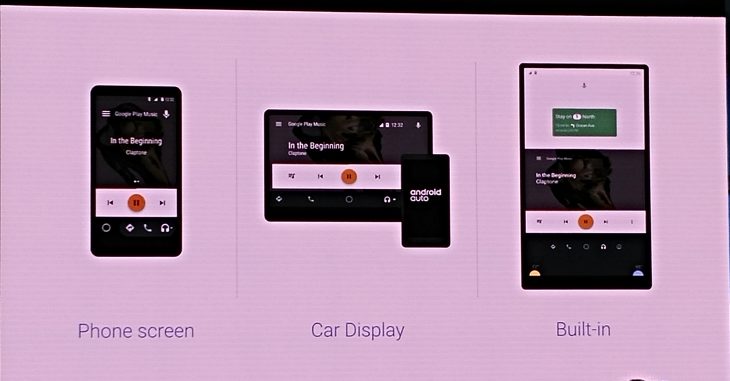
The other day Google blogged about how Android Auto would soon be arriving as an embedded system in some cars (Audi and Volvo at this stage). This afternoon at Google I/O more details were furnished to developers on what the system entails and how they could best make use of it within their apps.
We heard from two of Google’s partners with Android Auto, of which there are now over 300. Both Audi and Volvo talked about bringing the next generation of connected car to the market, of bringing a totally connected, stylish, digital cockpit to the driving experience using the embedded Android Auto. Audi talked about every single car in their upcoming generation will be fitted with an embedded Android operating system.
The goal of Android Auto is to bring a safe and seamless connected experience to the car using embedded Android Auto. For this to work it needs to be predictable and have all the required information easily accessible to the driver. Just as when Google bought Android Auto to the standalone phone the new introduction of embedded Android Auto into the ecosystem requires no extra code from the developer. All the standard APIs will continue to work just as before. If an app worked previously on Android Auto, it will work with the new built-in Android Auto.
The difference with embedded Android Auto to the usual Android Auto is that it is already in the car. Android Auto is meant to be a customisable experience with the user’s setup transferrable from one car to another. To allow this embedded Android Auto allows the user to change users when they start the car. Once the user is selected their preferences and apps are installed to function as they expect them to.
There are some additional APIs that allow the Android Auto to interact with the car itself but at this stage whether this is available for all developers is unknown — to allow any app to have control over essential car components could have massive security and safety implications. In saying that I would love an Android Auto app that was able to read data from my ODB2 reader and display it on my infotainment system interface.
The other big push this year in Android Auto is its interaction with Google Assistant. At this stage the Google Assistant on Android Auto is very limited. Now you will be able to use Google Assistant from within your car to lock the door of your house, ask when your next meeting is, set reminders for a specific time and ask it to tell you what the traffic is like up ahead. This is Google switching from a mobile first world to an AI first world, the focus of Google I/O 2017.
Google talked about using cloud execution for developers and how they can implement these things within their apps — invocation triggers (“OK Google bake me a…”), dialogue (what the users asks for connecting to a service within an app) and fulfillment (gives the user an action). All the time the goal is to maintain safety and limit driver distraction.
Some examples of using the new implementations included “OK Google….”:
- Order me some chicken dumplings from Sam’s Chinese restaurant for when I get home
- If I did not lock the door when I left lock it for me”
- Turn the lights on when I get home
- Entertain my kids
At this stage there was no mention of a wireless Android Auto but I have not given up on finding out more on this before I leave Google I/O this year — stay tuned.
Would you buy a car with embedded Android Auto? Would it tip the scales one way or another in your purchase?



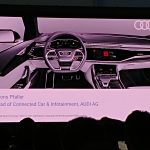



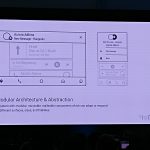
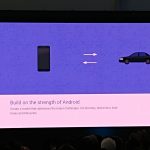
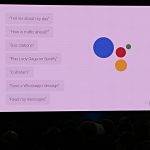
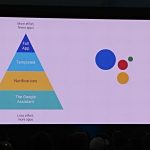

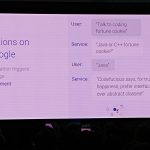



I still think it’s important for car manufacturers to simultaneously support Android Auto and Apple CarPlay. I don’t think exclusivity would be a selling point.
Google still loves Apple (though I don’t know why sometimes…), so I’m sure you’ll be able to get Carplay to display on the infotainment unit.